Related Research Articles

Haverford College is a private liberal arts college in Haverford, Pennsylvania, United States. It was founded as a men's college in 1833 by members of the Religious Society of Friends (Quakers). Haverford began accepting non-Quakers in 1849 and women in 1980.
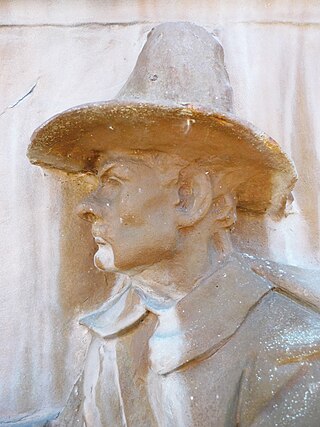
John Underhill was an early English settler and soldier in the Massachusetts Bay Colony, the Province of New Hampshire, where he also served as governor; the New Haven Colony, New Netherland, and later the Province of New York, settling on Long Island. Hired to train militia in New England, he is most noted for leading colonial militia in the Pequot War (1636–1637) and Kieft's War which the colonists mounted against two different groups of Native Americans. He also published an account of the Pequot War.

Rufus Matthew Jones was an American religious leader, writer, magazine editor, philosopher, and college professor. He was instrumental in the establishment of the Haverford Emergency Unit. One of the most influential Quakers of the 20th century, he was a Quaker historian and theologian as well as a philosopher. He is the only person to have delivered two Swarthmore Lectures.
Thomas Raymond Kelly was an American Quaker educator. He taught and wrote on the subject of mysticism. His books are widely read, especially by people interested in spirituality.
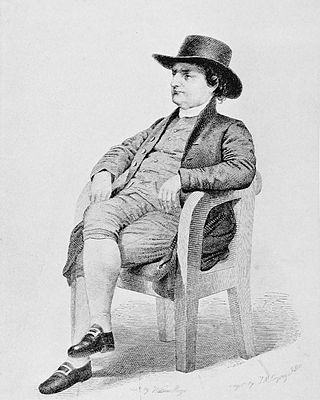
Isaac Tatem Hopper was an American abolitionist who was active in Philadelphia and New York City in the anti-slavery movement and protecting fugitive slaves and free blacks from slave kidnappers. He was also co-founder of Children's Village with 23 others.
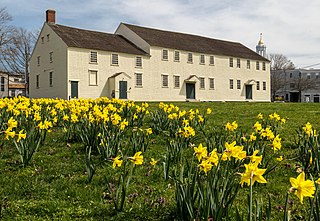
A Friends meeting house is a meeting house of the Religious Society of Friends (Quakers), where meeting for worship is usually held.

Roberts Vaux was an American lawyer, jurist, abolitionist, and philanthropist.
Howard Haines Brinton (1884–1973) was an author, professor and director whose work influenced the Religious Society of Friends movement for much of the 20th century. His books ranged from Quaker journal anthologies to philosophical and historical dissertations on the faith, establishing him as a prominent commentator on the Society of Friends.

The Underhill Burying Ground is a cemetery located within the Village of Lattingtown, in the Town of Oyster Bay in Nassau County, New York. The cemetery has been in continuous operation since the burial of Captain John Underhill in 1672. The Underhill Burying Ground is governed by the Underhill Burying Ground, Inc., a non-profit organization, incorporated under the laws of the State of New York.
Francis Jay Underhill (1863-1938) was a writer, amateur musician, and American bond broker with two firms, Fisk & Robinson and later with J. & W. Seligman & Co., that played a leading role in the financing and construction of the Panama Canal. Owing to his commercial success, Underhill was a collector of art and musical instruments, including many engravings, etchings, and lithographs of noted European and American artists. Underhill was an amateur musician and acquired an Antonio Stradivari violin of 1732 called the "Red Diamond." Underhill was also 4th President of the Underhill Society of America.
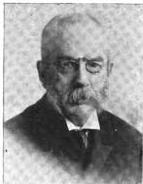
David Harris Underhill was an American librarian and author. He was a librarian for the St. John's Methodist Episcopal Church in Williamsburgh and the Astor Library. He was librarian in charge of the newspaper room at the New York Public Library. Underhill helped to organize the Underhill Society of America in 1892, and served as Secretary and Family Historian until his death in 1936. He was also an active author, editor, and compiler with several published works to his credit.
The Underhill Society of America is a non-profit family genealogical society that was organized in Brooklyn, New York City, on June 16, 1892. The society was incorporated in 1903. The purpose of the Underhill Society of America is to perpetuate the memory of Captain John Underhill and his descendants. Captain John Underhill was an important figure in Colonial America, having arrived from England in 1630 to form the colonial militia of the Massachusetts Bay Colony. He and his descendants served in important roles in American life from the military, to politics, business, finance, and industry.
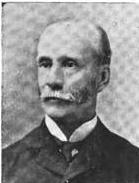
William Wilson Underhill was an American businessman who was president of the United States Fire Insurance Company of New York. He was educated at Burlington College and the University of Pennsylvania. In addition to his professional roles, he was a descendant of Captain John Underhill and served as the first president of the Underhill Society of America, a lineage society that was formed to perpetuate John Underhill's memory.

Estelle Emma Doremus was the daughter of Hubbard Skidmore, who served in the American Revolutionary War, and became a charter member and honorary vice president general of the National Society of the Daughters of the American Revolution (DAR). She was a charter officer and regent of the New York City chapter of the DAR between 1892 and 1894. The wife of U.S. chemist Robert Ogden Doremus, she was a leading member of the American community in Paris during the height of the Second French Empire.
Daniel Oscar Underhill was an American banker who served as the President of the Brooklyn Bank. Prior to assuming that role for twelve years he was an assistant cashier of the Chase National Bank, and for thirty-nine years worked for the old Fourth National Bank. Among his other roles and titles including serving as a vice president of the Underhill Society of America.
John Garrett Underhill Jr., also known as Garrett Underhill and Gary Underhill, was Captain General Staff G2 World War II and received the Army Commendation Medal for meritorious service. He was a Harvard graduate, linguist, and self-taught military affairs expert. For five years, he was a military correspondent for Life magazine and helped to make their Foreign News Department one of the most knowledgeable centers of military intelligence in the world.

Hannah M. Underhill Isaac was an American evangelist.
David Robert Yarnall, Sr. was an American mechanical engineer, co-founder and president of the Yarnall Waring Company in Philadelphia, and the 65th president of the American Society of Mechanical Engineers in 1946–47.
Frederick Newbold Lawrence was an American financier who served as president of the Union Club of the City of New York and president of the New York Stock Exchange.
References
- 1 2 3 4 5 6 7 8 9 Annual report of the secretary, Volumes 12-25. Underhill Society of America. 1904. Retrieved December 24, 2011.
- ↑ "Google Maps".
- ↑ "Annual Commencement of Haverford College.; THE ONLY QUAKER COLLEGE IN THE COUNTRY". The New York Times. July 12, 1860. Retrieved 31 December 2011.
- 1 2 3 "Death List of a Day" (PDF). The New York Times. December 25, 1906. Retrieved 31 December 2011.
- ↑ Exercises at the semi-centennial celebration ...: with the oration delivered before the alumni, ... the semi-centennial Collegian of the Loganian society. Haverford College. 1885. Retrieved 31 December 2011.
- 1 2 The Burling books: ancestors and descendants of Edward and Grace Burling, Quakers (1600-2000). Jane K. Thompson. 2001. ISBN 9780961310400 . Retrieved 31 December 2011.
- ↑ "Descendants of Capt. John Underhill; D.H. Raymond Reads a Paper on the History of the Family" (PDF). The New York Times. February 23, 1896. Retrieved 31 December 2011.
- ↑ "Underhill Burying Ground Ceremonies Cast" (PDF). Underhill Society of America. November 2008. Archived from the original (PDF) on 26 April 2012. Retrieved 23 December 2011.